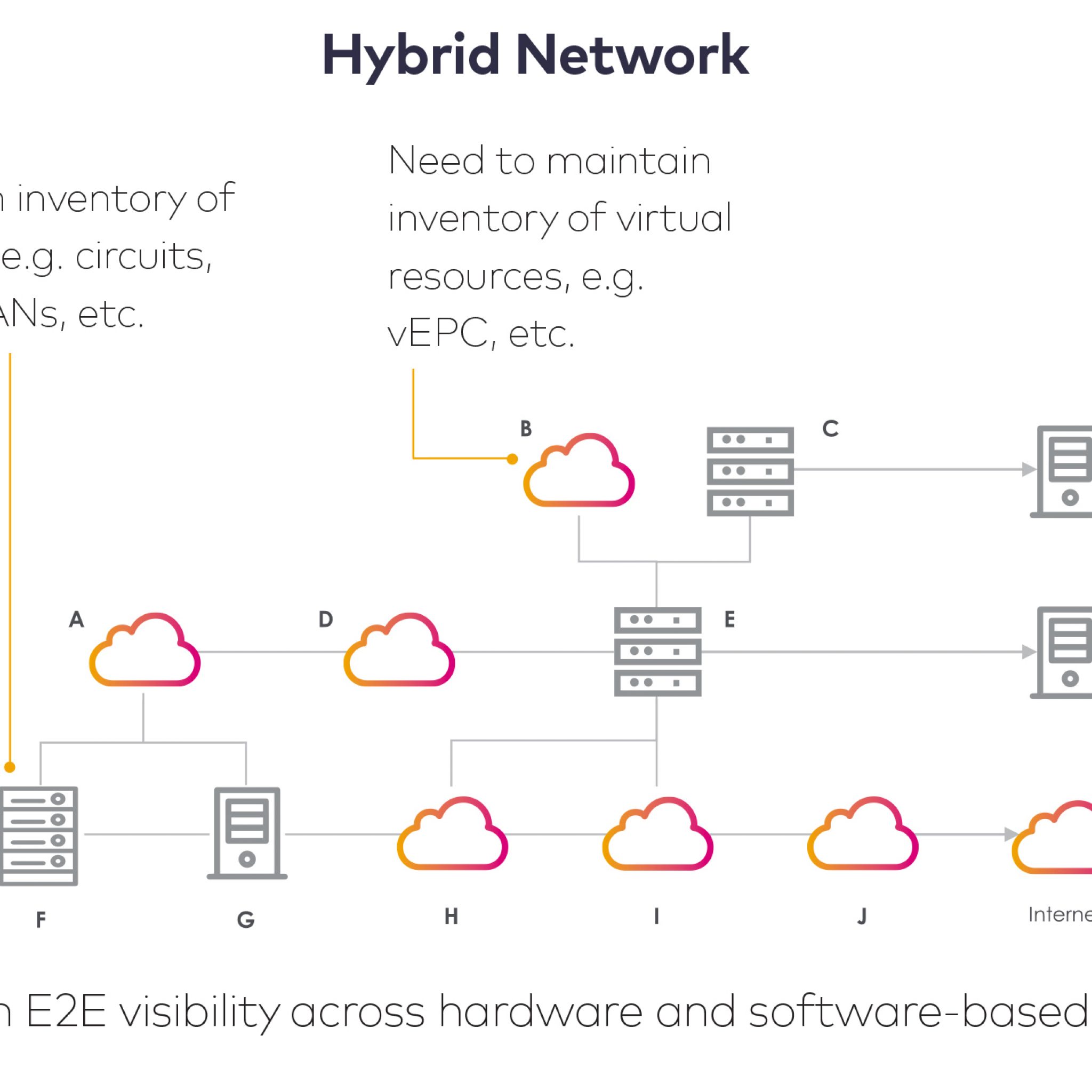Deployment of 5G presents new operational challenges for service providers, especially in the wake of network virtualization. 5G will leverage software defined networking (SDN) and network function virtualization (NFV) running in a cloud computing environment to benefit from its dynamic, rapidly configurable set of network capabilities. The 5G cloud RAN (C-RAN) will coexist with a non-virtualized network infrastructure, creating a complex hybrid RAN for the foreseeable future. 
This means that physical network resources such as eNodeB’s will need to be maintained in the network inventory system, along with their related logical resources such as link, circuit and port numbers. In addition, virtual network resources such as vEPCs, vSGWs, vIMSs, and the cloud infrastructure needed to support them will need to be tracked and managed in a real-time inventory for the virtual network.

A dynamic network requires a dynamic inventory system
To be ready for 5G, the network inventory system needs to be as dynamic as the self-configuring network it describes. The virtualized areas of the network, as well as the network areas functioning under an SDN control plane, can self-configure to respond to traffic demands, network faults, or service requests from the service orchestration layer. The inventory system needs to be capable of rapid updates in response to massive quantities of autonomous network changes. Knowledge of the current state of the virtual and logical network layers and their interrelationships with the physical network underlay is critical for configuring and operating the hybrid network, which will leverage network slicing to support services such as SD-WAN and vCPE, which typically cross several network domains.
These interrelationships are also critical for hybrid assurance, in particular for root-cause analysis of service impacting network faults and configuration issues that manifest themselves at higher network layers or in other network domains. In such situations, virtual test agents, element managers and domain controllers operating alone are not able to provide operations staff with the full, end-to-end network view and data needed for root-cause analysis and rapid fault resolution. Only a hybrid inventory system with accurate, end-to-end network coverage can do this.

An up-to-date inventory system is also critical for service impact analysis. When a major fault or performance issue is identified, it is important to know the nature and extent of the service impact, which can ripple through several network domains. A hybrid inventory system will also enable vendor-neutral, historical monitoring and performance analysis that includes both the physical network and virtual components such as VNFs, thereby enabling service providers to set and enforce performance agreements with multiple vendors who will supply the components of a 5G network.
The dynamic nature of the hybrid inventory needs to include the flexibility to adapt to new network technologies and VNFs, which will be critical as 5G is deployed. This requires advanced metadata management that supports rapid onboarding of new network technologies, VNFs, and physical and logical network elements.
Inventory as the master — the traditional role will also be needed
In the past, the inventory was always the master: a network design was created using inventory data, then pushed out to the network, and the inventory updated after the network change. While in the future, this type of workflow will be required far less, it will still be the mode of interaction with the physical network underlay, such as RRH’s, fiber front-haul and backhaul, and the core network physical infrastructure for network build, expansion, and maintenance. Consequently inventory systems will need to excel in both ‘inventory as master’ and ‘network as master’ scenarios.
Summary
5G promises a faster, more secure and low latency network that will be delivered by a complex, multi-technology physical and virtualized hybrid RAN. But that performance promise depends on network operations teams and automated systems having near-real-time, end-to-end visibility across the hybrid network, including the RAN, backhaul, and core networks, from the physical underlay to the virtualized overlay. Only a hybrid-ready inventory system can provide this visibility and the success of 5G will depend on it.
To learn more about Amdocs hybrid-ready inventory, click here.
Or come and meet us at MWC, Hall 3, Stand 3G10.

